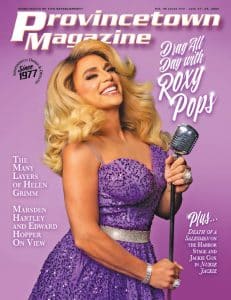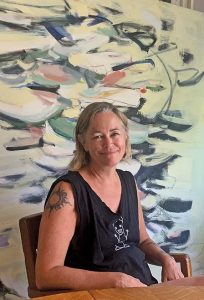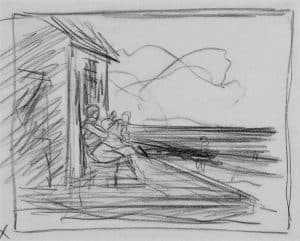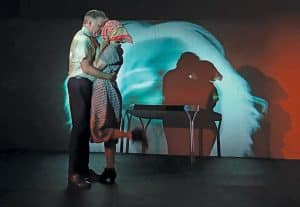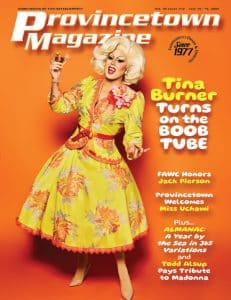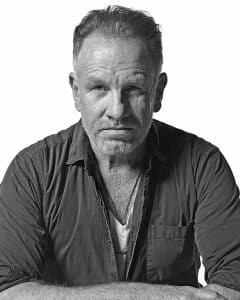by Rebecca M. Alvin
Hrag Vartanian always knew he was a writer. And early on, he realized that art was the thing he wanted to write about most. “I just had a natural ability to decode it, and it lived in my imagination. And it was something that really invigorated me. I felt like the conversations that art was having were the conversations I wanted to have,” he recalls.
Co-founder of the online arts journal Hyperallergic, Vartanian was born in Syria and then moved with his family to Canada as a child. He says, like many immigrant families, a career in art was not exactly the dream for him. “I felt like some of the avenues were limited to me because I didn’t come from an affluent background. And so I had to figure out my own journey in this world,” he explains. But then again, he says he thinks its par for the course in this field that both writers and artists have to find their way, as each has a unique vision that doesn’t often align with some set path to follow or ladder to climb.
Indeed, the impetus to write about art is not much different from the force that compels artists to create art in the first place. There sometimes seems to be a divide between those who make art and those who write about it. But the artist/critic tensions are not as black and white as they seem. After all, people who embark on a career writing about art are not very different from those who become professional artists, and in many cases, they are engaged in both making and writing about art. And yet, there can be a distance between what we read in arts publications and what we experience firsthand, both as creators and as audiences for art. But art is about creating a dialogue and so the art critic—or the arts writer, more broadly—is an essential component, bringing audiences in to experience works they might not seek out in the first place, or to engage with the works in a deeper way. Writers, after all, are artists, too.
While there are certainly critics who may abuse their platforms to express their own limited ideas about other people’s work, arts journalism is not fundamentally about that. Vartanian founded Hyperallergic with Veken Gueyikian (whom he later married) to shake things up back in 2009. Based in Brooklyn, N.Y., this was a new type of art magazine, one that expressed opinions overtly, but with an openness to conversation, disagreement, and ideally, a meaningful exchange of ideas online in stark contrast to the constant noise, Karen-era complaints, and inflated egos of some established critics unaccustomed to debating their views in the online space. The idea came from both Vartanian’s dissatisfaction with the lack of political and aesthetic engagement in other art publications at the time and a desire for something more accessible to art lovers who didn’t necessarily have the background other publications seemed to presume.
Vartanian will be the keynote speaker at the 16th Annual Encaustic Conference, organized by Truro Center for the Arts at Castle Hill. He says he will use the occasion to talk about some positive aspects of the art world in the current moment, rather than using it to only talk about what’s wrong with everything.
“I’d like to hold up some examples of real possibilities and the way some artists and people are trying new things in some creative ways. And I want people to get excited. But also, I think right now the art market has taken [away] a lot of people’s imagination, unfortunately, like other things around money. And I understand, because people need to sustain their lives, but I do think the art market has unfortunately dampened our imagination, a little bit, to imagine new things outside of those constructs. So I’d like to imagine those with people and talk about projects that artists are doing and that people may be surprised are art projects.”
He cites as an example a group of artists working on growing kelp around New York City waterways to help clean the environment, and says he’s excited to see environmental artists tackling issues of land rights, and generally lending their creativity to serious issues of our time.
These days it may be more difficult than ever to get ideas out there simply because of the constant overload of content all over the Internet, the never-ending options on various streaming platforms, and the limited attention span of a population completely overstimulated much of the time. But Vartanian accepts these conditions and insists that it is on the artist to build an audience. And in that same way, it is on the arts writer to do the same thing.
“Every creative person, whether they’re a writer, artist, or filmmaker, or anyone else, builds an audience along with their practice, right? And I really do believe that all of us have to spend more time building audiences around our work. And I think as a critic, it’s my responsibility to build an audience. Just like it is the responsibility of an artist to build an audience. And this notion that there’s a plug and play audience for what we do is actually really, I think, naive and very childish,” Vartanian says. “And frankly, I think that most successful writers and artists do that already. I don’t necessarily think that they see it that way, but like Hyperallergic gets over a million readers a month. It’s not because they just showed up one day; it’s because we spent over 13 and a half years building that audience.”
What began as an allergy blog for Vartanian, who suffers from a lot of allergies (hence the made-up word “Hyperallergic” as its name), quickly became a publication that features writing about all areas of the arts, from painting to installation to film and media. The writing is for everyone, not just people with art history degrees or for moneyed art collectors looking for advice on what to invest in, and yet it is sophisticated, insightful, and all-encompassing in scope. It acknowledges art as inherently engaged in the political, not necessarily in some overt, didactic way (although some art is), but as an overall condition under which art is and has always been produced. For example, you may look at a Dalí painting and just like it because it’s weird, but surrealism was a movement that, from its very beginning, was about the politics of the moment, about the political implications that would follow from creators accessing the very function of thought to release authentic, original works that actively questioned our everyday insistence upon logic and rational thought, “the logic of empire,” as Vartanian says. And so a work of art can be simultaneously thrilling, beautiful, and provocative and also politically radical in a way that goes far deeper than propaganda can ever go.
And this extends to works that may not at first appear as anything more than a pleasurable work of art, one we find ourselves attracted to on purely aesthetic grounds. For Vartanian, the political is always there, as subtext or context, even for a work created without overtly expressed political content.
“I actually like to think of artists as much larger than just the work they produce in their studio…Sometimes they may make the most formalist work that doesn’t look so political, but is actually informed by their political and other thinking in really unusual and interesting ways,” Vartanian explains. “The other thing I will say is, I think those people who think that they’re just looking at beauty, don’t understand that politics doesn’t just end because they think it’s not there. Right? Like, it doesn’t disappear just because you say it’s not there. It just means that the status quo or the environment or the context is just so familiar and may not hurt you so you don’t want to change the status quo. But it still has a political life and it has a political reality. Like how did that work get into that place that you’re looking at it? That is an act of politics in and of itself. What art we preserve. What art we save. What art we restore. What art we display.”
Hrag Vartanian will be giving the keynote speech at the International Encaustics Conference presented by Truro Center for the Arts at Castle Hill on Saturday, June 10, 9:30 – 11:30 a.m. at the Provincetown Inn, 1 Commercial St. The event requires pre-registration. For more information visit castlehill.org. For more information and writings by Vartanian, visit hyperallergic.com.


